This is a philosophical question. Over the last few years, many of the household devices, particularly those that are more mobile and etc are DC devices. Are we at some point where a DC household may become a possibility and Edisons dream might come true??
The array of DC devices
- Internet stuff - routers, modems
- Most complex computer electronics - Desktops, laptops, NAS, phones, tablets, gaming consoles, etc
- Lighting - LED
- More that I cant think of or perhaps know which also convert AC -> DC
Problems with AC
Each device needs its own power supply ( AC-> DC power brick). This is
a) Unpleasant to look at and deal with, and
b) a costly point of failure.Each power brick may or may not be optimized, as far as power conversion goes.
Alternative - A central (or a few ) high capacity power adapter which converts the AC into a DC power grid for the house which can then be tapped directly by the various devices. This eliminates the need for the power brick, and hopefully the central power adapter is of state of the art, and can be upgraded seperately from the devices, as needed.
Need standardization of:
- Device voltage. Currently devices use 5/ 9 / 12 or others I may not be aware of, for this idea to work they need to work with one particular one, unless switching between voltages is cheap enough, or multiple DC lines are provided.
- Power socket input. Each device appears to have its own input socket type, this should standardize if the power supply cable should be comoditized, perhaps USB - C will play a part here.
